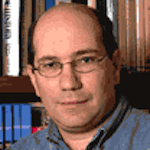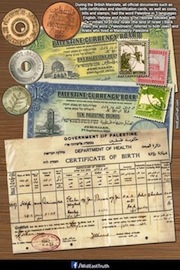| |
Jerusalem And Israel: Inspiring Studies In Renewal And Redemption
By Gil Troy
The Canadian Jewish News
June 19, 2003
The death toll is devastating. Each casualty represents a family shattered, a world destroyed: Yardena Shoshani, ten years old; Esther Ben Shimon, nine years old; Benjamin Yehezkel, eight years old -- all shot just outside Jerusalem, the Jewish people‚s venerable capital. These three innocents are part of a broader tapestry of pain, including 77 Jewish nurses, doctors, and administrators slaughtered in one bloody ambush; in total, 1,256 Jews murdered in five months for the simple crime of wanting to live free Jewish lives in the Jewish homeland.
These names and numbers, which echo today‚s tragic headlines, are in fact from the bad old days - the five months preceding the British withdrawal from Palestine in May 1948. Then as now, the Jews had accepted a painful, internationally brokered compromise, in that case the 1947 United Nations plan to partition Palestine. Then as now, the Arabs rejected the compromise and unleashed a brutal war of terror against Jewish children and Jewish parents, Jewish doctors and Jewish nurses, Jewish civilians and Jewish soldiers. Then, as now, Jerusalem was at the center of the battle.
Contemplating the bloody history of this most beautiful of cities, the capital of a country that dominates the Western imagination for better and for worse, is both depressing and exhilarating. The pain of yesteryear stings, even half a century later, especially because new tears are falling for new innocents, on both sides. And the fact that the fight continues between the same peoples over the same turf, is numbing. It is hard not to wonder, especially from the fleshpots of North America, why can‚t these people just get along.
But Jerusalem‚s story, like Israel‚s story, is inspiring as well. For starters, yesterday‚s march of misery ended, it has not been an unrelenting tale of woe. Even today, mired as we are in the conflict, tending as we do to impute to Palestinians a superhuman kind of willpower, we see that their bloodlust has subsided before - and will do so again. Yes, the Muslim cry of “kill the Jews: there is no punishment for killing Jews,” provoked rioting in 1920 and 1929, in 1936 and 1947, and random acts of violence have repeatedly pockmarked Jerusalem‚s golden facade. But again and again, when faced with Jewish willpower, unity and strength, the Arabs retreated, and the violence ended. And sometimes, what came in its wake was not simply a state of non-war, but true acts of neighborliness.
Although too often stricken by war, Jerusalem remains a city of peace. In fact, the story of Jerusalem in the 20th century is a microcosm of the story of Israel, an inspiring case study of renewal, rebirth, and redemption.
One hundred years ago, the ancient capital of the Jewish people was a dump. A town of 70,000 people -- 45,000 largely destitute Jews and 25,000 largely destitute Arabs. Theodor Herzl, the founder of modern Zionism, was delusive enough to envision a Jewish state 50 years down the line - but Jerusalem exhausted even his powers of imagination. “Shouts, smells, tawdry colours,” he recorded in his diary in 1898, “people in rags crowding the narrow, airless streets, beggars, cripples, starveling children, screaming women, bellowing shopkeepers. The once royal city had indeed sunk to the lowest depths.”
Yet, the Zionist revival of Jerusalem mocked Herzl‚s words. A mere 20 years later, the city was progressing. British census reports would show that in Jerusalem, as elsewhere in Palestine, the Zionist boom attracted both Arab and Jewish immigrants. Between 1921 and 1933, 20,000 Jews immigrated to Jerusalem, as did more than 21,000 Arabs from as far away as Morocco, Algeria, Libya and Yemen.
Over the decades, Jerusalem would thrive economically, culturally, politically and architecturally. The little people of Jerusalem, the shopkeepers and the teachers, the artists and the bureaucrats, the businessmen and the charwomen, both Arab and Jewish, would be the true stars of the show. But Jerusalem would also be blessed by remarkable leaders -- Bernard Dov Joseph, who led the city through the 1948 siege; David Ben-Gurion, who made the city Israel‚s functional capital; Yitzhak Rabin and Moshe Dayan, who helped reunite the city in 1967; and, most notably, Teddy Kollek.
Kollek is the mayor of the century. He polished the stones of Jerusalem while working to unite its people. As Martin Gilbert reports in his sweeping volume, Jerusalem in the Twentieth Century, during Kollek‚s tenure from 1965 to 1993, “facilities were provided for the Arab population of East Jerusalem beyond anything introduced under Jordanian rule [which lasted between 1948 and 1967], including sewage, a piped water system, clinics, parks and gardens. Access to Israeli hospitals was unrestricted.” Moreover, the Western part of the city, and the Old city itself sparkled, enhanced by steady economic development as well as stirring acts of generosity from donors throughout the world. By 1994 there were 420,000 Jews living in this modern gleaming metropolis, in relative harmony with 155,000 Arabs.
The story of Jerusalem of Gold, Yerushalayim shel zahav, then, is the story of the Jewish state. It teaches us to hope for peace, to pray for good times, and to work to achieve a new and better reality. Even amid the frustrations of 2003, the Jewish people‚s 3000-year-old capital retains its magic, just as even amid the tragedies of today, the Jewish people‚s 55-year-old state retains its allure. It is remarkable how the city thrived in the 20th century, despite being a flashpoint between Arab and Jew. In fact, it suggests that that there were other forces shaping the Jewish state, there are other themes we can find when seeking to understand Israel.
Just as the story of Canada is more than the story of the French-English conflict, and just as the story of the United States is more than the story of the white-black conflict, so, too, the story of Israel is more than the story of the Arab-Israeli conflict.
In contemplating the history of Israel beyond the conflict, Israel emerges as not just a great success story but a fascinating litmus test, an experiment illustrating some central lessons of 20th-century Western history. Israel‚s story teaches us that culture matters, democracy works, nationalism counts, immigration fuels growth, and capitalism remains a great social blessing and somewhat of a curse, a facilitator of individual and national greatness as well as a social solvent.
One offshoot to the debate surrounding Harvard professor Samuel Huntington‚s provocative paradigm of a “Clash of Civilizations” is a debate about the relevance of culture to social strength and general progress. In the 1960s and 1970s, academics succeeding in convincing many that it was all about politics, that countries needed effective leadership to prosper, and that, as Daniel Patrick Moynihan summarized the position - with which he disagreed - “politics can change a society and save it from itself.” In contrast, Moynihan, Huntington and others began to argue that culture, meaning “the values, attitudes, beliefs, orientations, and underlying assumptions prevalent among people in a society,” is the real key.
Certain cultures were indeed more likely than others to foster “human progress,‚ which Huntington defines as “movement toward economic development and material well-being, social-economic equity, and political democracy.”
In introducing a collection of articles he co-edited in 2000 called Culture Matters, Huntington compared Ghana and South Korea. The two countries had similar economies in the 1960s, but thirty years later, Ghana‚s economy was a fraction of South Korea‚s, which had become an industrial colossus. The difference, Huntington argued, was the fact that South Koreans “valued thrift, investment, hard work, education, organization and discipline.”
Even with the current economic crisis, Israel‚s trajectory from the austere 1950s to the sophistication and luxuries of today is remarkable. It is especially impressive considering Israel‚s limited natural resources, its relatively small population, its hostile neighbors, and its underdeveloped neighbors.
Israelis wisely built a society more oriented toward the West than the East. They developed a culture that prizes education, hard work, ambition, vision, creative problem-solving, and an entrepreneurial spirit. As a result the days of “tsena,” when it was eggplant for breakfast, more eggplant for lunch, and eggplant leftovers for dinner, are long gone. Israel is not only an impressive high technology center -even after the most recent economic crash - but it is a leading source of all kinds of scientific and medical innovations, the result of its many universities churning out a smart and sophisticated work force.
Democracy - in all its splendor, and all its complexity - has helped facilitate the country‚s economic and social progress. At first blush, this statement is difficult to believe. For starters, in the 1970s leading thinkers were predicting the demise of democracy and warning about how ineffectual and weak a democratic system could be. Moreover, Israel has developed a fractious, polarized democracy, with too many parties, and too many shrill and unreasonable politicians. The yelling and backbiting that occurs in the Knesset is an embarrassment to the Jewish state and the Jewish people.
Yet democracy - thank goodness - is not just a question of what goes on in a country‚s parliament. The whole democratic package - the commitment to liberty and equality, the respect for individuals, the reverence for the rule of law, the right to dissent and to debate, the freedoms of press, religion, and speech - enhances social and political strength and has helped Israel advance.
Yes, the arguments among politicians are often hysterical. Yes, the challenges often seem overwhelming. But the way Israel has sustained its half-century of democracy, especially under unprecedented outside pressure, should make it the toast of the Western world, and a model for humanity. In Israel we can see how culture matters and politics helps - that Israeli democracy has thrived in a cultural soil that welcomes democracy, and that democratic institutions and ideals have reinforced that cultural orientation.
The success of Israel, the realization of the Zionist dream, is also a tribute to the positive power of nationalism. In our cynical, post-modernist world, it is easy to caricature nationalism as fanatical and narrow-minded, to dismiss patriotism as provincialism. But for all the examples of nationalist excess in the 20th century, the era also offered many examples of nationalist success. Nationalism is not only about one group of people feeling superior to others. It is also about a country being able to give individuals a feeling of community, and being able to mobilize that community to accomplish together what people could not accomplish on their own.
Surprisingly - or perhaps not so surprisingly considering human nature and our need for communal identity - even many great scientific breakthroughs of the 20th century, from the cure for polio to the fight against AIDS - had a nationalist component. In the United States, nationalism does not just entail Fourth of July rhetoric and huge military budgets. It has also led to the Marshall Plan for Europe, the fight against poverty at home, an entrepreneurial zeal that mixes the zeal to make a buck with the desire to build America, and a spirit of giving and concern for others that buttresses altruistic instincts with national pride. The nation may not be the only form of communal organization, nor necessarily the best; but it is the central organizing principle in the modern world and can produce a lot of good.
Contrary to the many libels and smears surrounding it, the saga of Zionism has also marked a proud chapter in the history of nationalism. Medinat Yisrael, the state of Israel, is a remarkable experiment in national rejuvenation -- of building in Eretz Yisrael, the land of Israel, and reorienting and energizing Am Yisrael, the nation of Israel, meaning the Jewish people.
The early Zionists dreamed of a new Jewish commonwealth which would be a boon to humanity, not just to the Jewish people. Especially considering its small size and relative youth, the State of Israel has a pretty impressive track record so far. In the 1950s the kibbutz ideal offered a model of humane and freedom loving-socialism that contrasted with the oppressive Soviet-style Communism. By the 1960s the representatives of this young fledgling state were working with developing African societies less fortunate than their own. In the energy-stretched 1970s Israeli solar power offered alternative visions of how to live and consume. By the 1980s, Tzahal, the Israel Defense Forces, was already positioning itself as a world leader in search-and-rescue and in pioneering mobile medical units so that when there were earthquakes in Turkey, atrocities in Rwanda, bombings in Tanzania and Kenya, IDF soldiers were mobilized to save lives. In the 1990s Israeli technological, medical, and pharmacological miracles helped transform the world, shrinking the world through innovations such as “ICQ,” an online chat technology, and saving lives with cutting-edge brain research at Tel Aviv University, innovative emergency room techniques at Hadassah hospital, and amazing cures developed in private labs.
Israeli innovations, Israeli success, also prove that immigration can be a positive and creative force that fuels growth. It is noteworthy that in a country like the United States the first time an immigrant ascends to a particular position, people cheer. But Israel is such a melting pot that when Yitzhak Rabin became the first native-born prime minister, it was a cause for celebration. Israel has welcomed the surviving remnants of Hitler‚s Holocaust, the 800,000 refugees from various Muslim countries, 20,000 Ethiopians, and one million Russians. Each time, it‚s been a win-win story, as Israel has offered desperate individuals refuge but also benefited from their skills, culture, and ambition.
Israel has been able to absorb so many immigrants because, as a capitalist country, it has, overall, enjoyed remarkable growth overall in the last half-century. As in the United States, Israeli society demonstrates how capitalism can harness individual skill for the good of the collective, as people enticed by the rewards at the end of the rainbow have helped build the modern, industrial, sophisticated, society Israel is today.
Alas, as in the United States, that capitalist culture emerges as a social solvent, often undermining a sense of intimate community in the zeal to empower and energize individuals. Israel‚s story proves that free enterprise is good, but that it is not without its costs. The challenge of the 21st century will be to continue to build on the good while managing the costs.
These days, especially in Canada and Europe, it is far too fashionable to dismiss Western values, American-style values, without really thinking about the alternatives. We live in a Manichean upside-down world which is hypercritical of Western mistakes and often blind to the drawbacks of other societies. We need to remind ourselves again and again that just because many people criticize us, just because we are in the embattled minority, does not mean that we are wrong.
To appreciate Israel‚s role as a Western, democratic, capitalist country, helping to build the world, even as it absorbs and enlists both immigrants and native Israelis, is to look at a fuller picture of Israel than what we usually see. This is not to say we should view Israel through rose-colored glasses. Rather, we should use a wide-angle lens.
As we toast Israel in its 55th year, we cannot just make it about Arabs or Palestinians. We toast the builders of Israel, the dreamers of Israel, and the unsung heroes of Israel, the everyday men and women who have made this miracle of a country, strong, proud, humane and free.
Gil Troy is Professor of History at McGill University and the author of Why I Am a Zionist: Israel, Jewish Identity and the Challenges of Today.
Comment on this article

|
|











